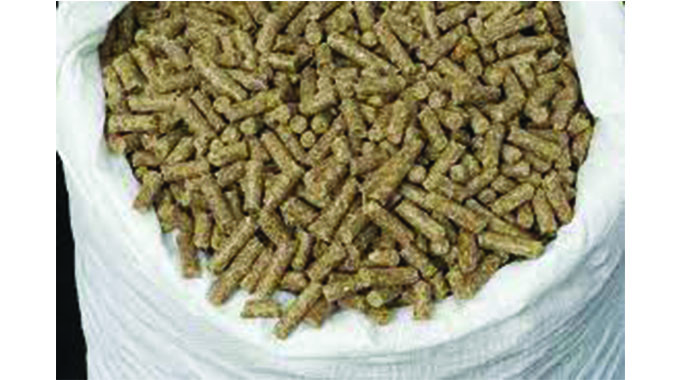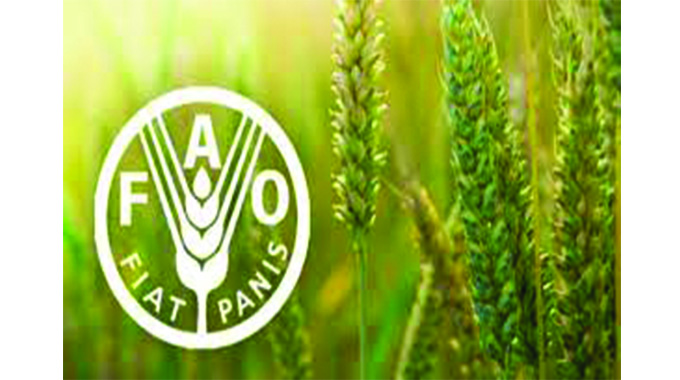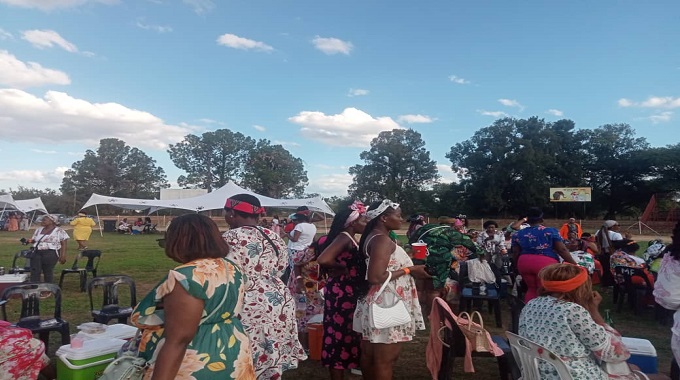Climate change tough on livestock farmers

Sifelani Tsiko
For Ms Sinqobizitha Hleza (43) a livestock farmer of Sibangane Village in Ward 4 of the dry and arid Umzingwane District in southern Zimbabwe, cattle are “banks on four legs.”
In this part of the region, cattle are the main source of livelihood for her and many other small-scale livestock farmers.
But with temperature changes, and declining and erratic rainfall, looking after cattle has become a major headache for Ms Hleza and most other farmers.
“In the last season, rainfall amounts were erratic. What’s happening to us now is exceptional. Drought is now a permanent thing here and every year we’re getting less and less rain,” she said.
“Water is scarce and as livestock farmers, we’re facing grazing shortages. All this affects us deeply because we rely on cattle as our bank on four legs.”
Umzingwane District has for the past decades clocked low rainfall, often experiencing back-to-back droughts.
In this part of the world, wetter seasons are now very rare compared to drier periods.
The frequency of drought is intensifying and farmers are now feeling the negative impact of climate change.
Some of the problems that Ms Hleza and many other livestock farmers are now experiencing include water scarcity, pasture shortages, disease outbreaks and low prices for their less healthy cattle.
In Umzingwane, just like other drier parts of Matabeleland, about 70 percent of the land is used for livestock.
The knock-on effects of climate change resulted in 468 cattle deaths in 2019, 219 in 2020 and 39 in 2021 for this district, according to statistics from the Department of Veterinary Services.
But the plight of this devastating loss of ‘banks on four legs’ has rallied Ms Hleza and other women in her village to start a bush meal business with 11 members (eight females and three males) to help end drought-related livestock deaths.

Department of Veterinary Services
In response to the devastating impact of climate change, Ms Hleza and other livestock farmers are coming up with innovations to protect their source of livelihood. “We’re now making our livestock feed using locally available resources. We have a grinding meal to make our bush meal which we use to feed our cattle,” she said.
“The cattle condition has improved in lean seasons and we’ve cut costs. In the past, we would travel about 100km to Bulawayo to get supplementary feed.
“Now things are better. Over the past three years, we’ve bought hammer mill equipment for bush meal feed processing and grain grinding to produce affordable stock feed with locally available ingredients from the forest, fodder and crop stover.”
Ms Hleza said they formed the Vusanani Group which started as a savings and lending club in 2016.
The group got tremendous support from the Zimbabwe Resilience Building Fund’s long-term development initiative called the Matabeleland Enhanced Livelihoods, Agriculture and Nutrition Adaptation (MELANA) project.
Under this initiative, the farmers got 70 percent financial support for the procurement of bush meal hammer mills and sorghum threshers.

Stockfeed
They also received training in crop and animal husbandry. After gaining knowledge, Ms Hleza and members of her group are now producing low-cost feed using locally available resources such as tree branches and pods which are rich in protein and are cheaper compared to conventional feed.
Stockfeed is made using crop residues, monkey bread and acacia seeds rich in protein which is then mixed with chicken droppings, sorghum, maize and coarse salt to help farmers save their cattle from drought.
“Before we started making our bush meal, we would lose our cattle due to water scarcity and lack of grazing,” Ms Hleza said.
“I lost three cattle and another farmer here lost about 10 in the 2017 drought year. At that time, we did not know how to make a bush meal. But the unity of purpose and our willingness to learn has turned things for the better for us.”
Farming technologies are now helping them to mitigate the effects of climate change and to protect environmental resources and livestock.
Access to water is helping them to overcome hunger and poverty as they adopt technologies that improve the production of traditional grains and bush meal for their livestock.

Livestock
“Initially, they had no idea on how to respond to the changing climate, but with support from Government and other development partners, most women in our district have now been empowered,” said Ms Siphathisiwe Mlotshwa, acting District Development Coordinator for Umzingwane Rural District Council.
“Women now have the knowledge, skills and equipment to face challenges brought about by climate change.
They have more goats and cattle. We’re encouraging them to do goat rearing because goats are resilient to droughts. Women can use goats to also build their resilience to drought.”
She said fodder production by women in the district has also helped to reduce cases of gender-based violence.
“There’s a reduction in gender-based violence cases here because women are empowered and have become independent and no longer rely on men for everything,” Ms Mlotshwa said.
“There’s less physical abuse now. Women are now moving ahead to empower the girl child through their livestock and fodder production projects. Ms Hleza and members of the Vusani Group now run a successful business.

Maize
“If women are empowered, they can cope with climate change and survive on their own.”
Ms Hleza said all group members were actively producing and promoting the production of fodder crops and small grains to support their business.
The group has managed to produce more than 58,7 tonnes of feed between 2019 and August 2022 earning the group thousands of dollars.
“Our fodder production business has grown tremendously,” Ms Hleza said. “We’re selling feed to local farmers in other wards. We now have clients in the Diaspora who are buying our bush meal to help improve the condition of their livestock here.”
At the 2022 Zimbabwe International Trade Fair, she said, the group secured an order for 10 tonnes of feed.
“In September, we produced about 2,5 tonnes of feed,” Ms Hleza said.
“Life has changed for the better for us. I now have 10 cattle up from the only three I had in 2019. Some of our members now have 20 cattle, some 30 cattle depending on their capacity and resources.”
Their business has helped women unlock their potential and build resilience. They have invested their profits in different ways including the acquisition of a second grinding mill, a scotch cart, a digital scale and regalia for promotional marketing.

Zimbabwe International Trade Fair (ZITF)
Other group members have built houses, and shops, and paid school fees for their children while some bought livestock and other household needs.
Currently, the group has more than 27 goats which are supplemented with the bush meal. Apart from the group livestock assets, each farmer has also expanded their livestock numbers, improving chicken, goat, donkey and cattle numbers.
Impressed by the group’s performance and model, Councillor Jethro Moyo has secured land for the group at a local business centre to help the women set up a fodder production plant, outside of an individual homestead where they are currently operating from.

Mr Rodney Mushongachiware, a market linkage specialist for a local development organisation said fodder production is critical in improving food, nutritional and income security for the livelihoods of smallholder farmers.
“Climate change has devastating impacts,” he said. “When women are empowered through such projects, they become more resilient. They can adapt to the changing environment. Helping them to secure markets is more important for the survival of their business.”
He said the Vusanani Group had now expanded their business to include the production of sorghum samp.
“Diversification is very important. The group has now produced about nine tonnes of sorghum samp. As a country, we have to promote the utilisation of small grains. At present, there is no sorghum samp on the market. This is a first for the country and the group’s income will improve even more through this initiative.”
Ms Hleza said her group had so far earned nearly US$1 700 from their sorghum samp processing and value addition business.

Photo Credit: Getty Images
Mr Ntando Mhlanga, a district development officer in the Women Affairs, Community and Small and Medium Enterprises Development, said they were now supporting other women in the district to replicate the Vusanani Group success model.
“Livestock is quite important for women in this district,” he said. “We are now using the Vusanani model to help other women in the district produce their own feed. Replicating this is going on and we’re happy with the uptake.”
In South Africa and parts of Botswana, livestock farmers are using cross-breeding to enhance the resilience of their livestock against climate change-related impacts. The farmers are doing this with the assistance of the government, development agencies and livestock experts to promote the crossing of indigenous and exotic breeds. In these two southern African countries, some farmers are also harvesting rainwater from their rooftops to store underground.
The water is then used for livestock in the lean season. The Food and Agriculture Organization of the United Nations (FAO) says disruptions of Africa’s livestock sector through climate change would have profound effects on the lives and livelihoods of small-scale farmers and livestock keepers – the backbone of the continent’s food production.

Food and Agriculture Organisation (FAO)
It says climate change is also impacting the production of feed and forage and the availability of grazing land and water while worsening climate-sensitive diseases and disease vectors.
Implications of the looming disruptions on livestock value chains and livelihoods are dire for the continent.
Africa has an estimated 800 million livestock keepers. The livestock sector contributes between 30 to 50 percent of agricultural Gross Domestic Product and supports the food security and livelihoods of about one-third of Africa’s population.
And, without adequate coping strategies, livestock farmers face a gloomy future.
This story was funded by the Women in News SIRI Real Grant Project.












Comments